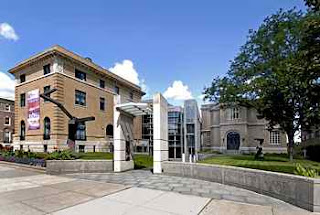Ingrain or Scotch carpeting was a main stay of early 19th century carpeting for households both common and wealthy. Woven as a two layer double cloth with geometric or curvilinear designs, ingrain carpeting became popular through the last half of the 18th century and blossomed in the 19th century.
One of only four known American produced ingrain carpets is in the collection of The Society for the Preservation of Long Island Antiquities (SPLIA). It also has the most supporting information about its manufacture at Jones Mill, located in Cold Spring Harbor, NY. Advertisements from Jones Mill appear in the newspapers during the 1830′-s and document the production of figured ingrain carpeting among other fabrics.Ingrain carpeting woven by American fancy weavers in the first half of the 19th century is distinct from the imported Scotch and Kidderminster carpets. The American versions use locally produced softer grades of wool and have a slightly different structure, more akin to the structure of woven coverlets of the same period.
It has been extremely difficult to document the American carpets because with the use of soft wools, the carpets were less durable and ended up being worn out, cut up and used for smaller rugs, and simply disappeared.
We’ve been working at Thistle Hill Weavers to reproduce the Jones Mill example both in its original color, and in a blue and white version which will be installed in SPLIA’s restored Sherwood Jayne House.
Master Weaver Rabbit Goody write about historic textiles. Her weaving studio, Thistle Hill Weavers, in Cherry Valley, NY, is a small mill modeled after the trade shops of the 19th century.







